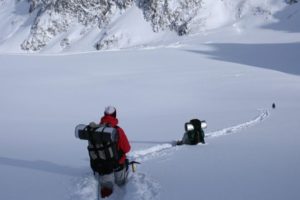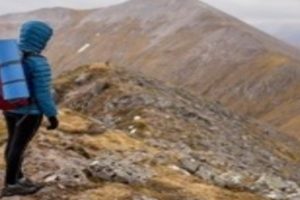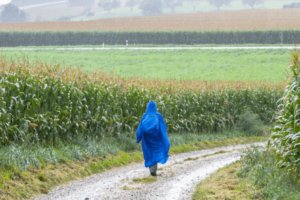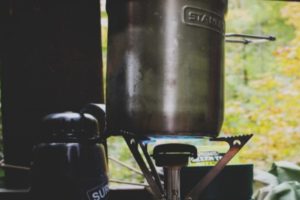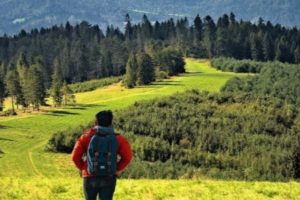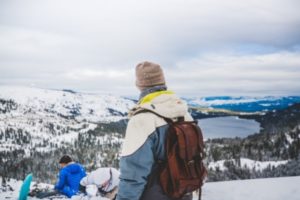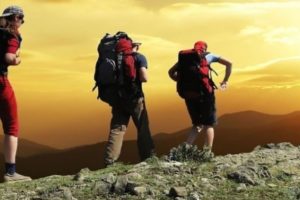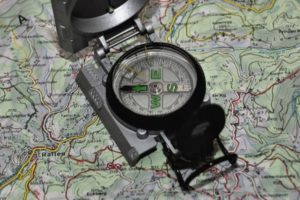If you’re new to hiking in the countryside, I would not going out and buy anything until you’re sure you want to continue with your hobby over the long-term. Specialized hiking equipment tends to be expensive and in the case of walking boots, not something that you’ll likely be wearing outside of walking in the mountains.
It’s very easy to pick a short easy route and simply go for a walk in the countryside. You can easily use your smartphone and google maps for basic directions while sticking to the marked paths along the route. If you take a simple rucksack with a water bottle to keep you hydrated and possibly a rain jacket in case the weather turns on you, you can start to have to fun in the countryside.
Once you’re sure this is a hobby for the future, you can start buying specialist hiking equipment to help you walk further, in different locations, different weather and possibly take on over-night camping in the countryside.
What I’d buy in Order of Priority
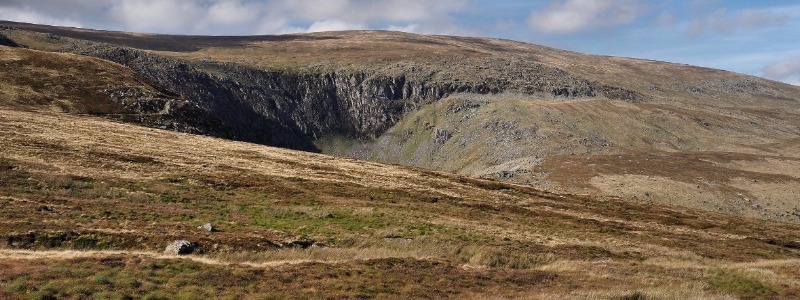
Hiking Boots
Your priority needs to be buying a good pair of hiking boots or potentially if you’re only walking short distances, Hiking Shoes. Hiking boots are designed to protect your ankles from sideways movement, protect your feet from rugged terrain and provide added grip over slippery rock surfaces.
Choosing a good pair of hiking boots is a personal choice. As long as you buy them from a reputable outdoors shop with knowledgeable boot fitters. If you need help choosing the right boots, we have a great resource here, while our favourite boots are here.
Hiking Socks
Together with buying hiking boots, make sure you buy yourself a pair of hiking socks. The benefits of hiking specific socks revolve around expelling moisture away from your feet and trying to stop blisters forming.
Cotton socks will not help as they retain moisture as you sweat. This moisture gets trapped in between your sock and your foot, causing friction on your skin. It’s this friction that causes blisters. Look out for wool or synthetic socks (Smartwool and Darn Tough are great choices). Yes, I appreciated they are expensive, but they’re worth every penny. A small blister on your heel will ruin your day on the mountain.
Rain Gear
I’ve seen people simply recommend £10 rain jackets to buy online. In the short-term, this is possible, however, you’ll want to move yourself to something breathable quickly. The problem with a £10 rain jacket is that it’s likely to be made from an impermeable material that will be 100% waterproof, but also will be 0% breathable.
The problem with a jacket being 0% breathable is that it will not let body heat escape. While it will stop water getting in, you’ll sweat so much, you’ll be soaked right through.
Back-Pack
For a day-pack, you should be looking around 20-30 Liters and for a camping pack around 50-60 Liters in size. This is really all the space you’ll need. Yes there are bigger packs available on the market, but if you have a bigger pack, you’ll take more than you need, it’ll weigh more, and you won’t enjoy your camping trip as much.
Yes, you can get 100% waterproof bags, but they’re expensive, and as a result, I’d recommend that you stick to buying a value for money backpack and using a cheap dry bag for anything you need to keep dry.
Extra’s

- First Aid Kits – In the short term this does not need to be major, but you need to be able to patch up the blisters and any cuts you get while you’re out on the mountainside. I would also expect you to carry insect repellent, suntan cream and Swiss Army knife or multi-tool.
- Flashlight or Headlamp – This is essential if you find your hike takes longer than expected and its already dark.
- Navigation Equipment – GPS Unit, Map and compass
- Hydration – I’ve used, and to an extent, still use water bottles attached to the side of my rucksack. That said, most of the latest day-sacks and camping-sacks are designed with a hydration system that fits inside your pack with a hose that you drink from. You’ll need plenty of water, realistically try to budget for 0.75 litres per hour of strenuous hiking.
- Face Mask or Insect Head Net – Especially on low-land or boggy areas, you’ll find a selection of different flying insects and mosquitos that cause serious annoyance if your walking or trying to camp out in the countryside, a face mask does help.
- Trekking Poles – Once you start camping and thus are wearing a heavy pack, hiking poles are worth their weight in gold. They take a lot of the pressure off your knees on both the steep uphill and steep downhill slopes, while providing support over rocky terrain. There is a fantastic guide to choosing the right hiking poles here, but try to make sure you choose a set with different tips, including rubber tips, boot tips, mud baskets, and snow baskets.
- Navigation Equipment – You can buy all the GPS units you want, but if you don’t know how to use it, they won’t get you very far. Personally, I prefer the compass and map to start out with, however, really you need to be planning as much as you can ahead of time. The vast majority of accidents happen because people either have done no research on their route or deviate from their route to make it shorter or less steep.
